So, you’ve just heard some bloggers reporting that they make five or six figures a year. But you’ve also come across others who make $100 a month or even less.
Now you are wondering why the disparity. You even doubt the reports. How about I take you through the basics of how to start a blog and make money and maybe you can change this success equation?
I started blogging three years ago, and I currently make over $4,000 a month on average. The truth is that it has been a long process that I’m going to share with you.
I use these SEO tips and tricks to set up my blogs. By following their 60 steps to a profitable site, anyone can start blogging and be in a position to make about $1,000 a month with Ezoic Ads technology or affiliate links. You should check it out. It is part of the reason why I’m getting success in blogging $4,000.
Amazon Earnings In 2020
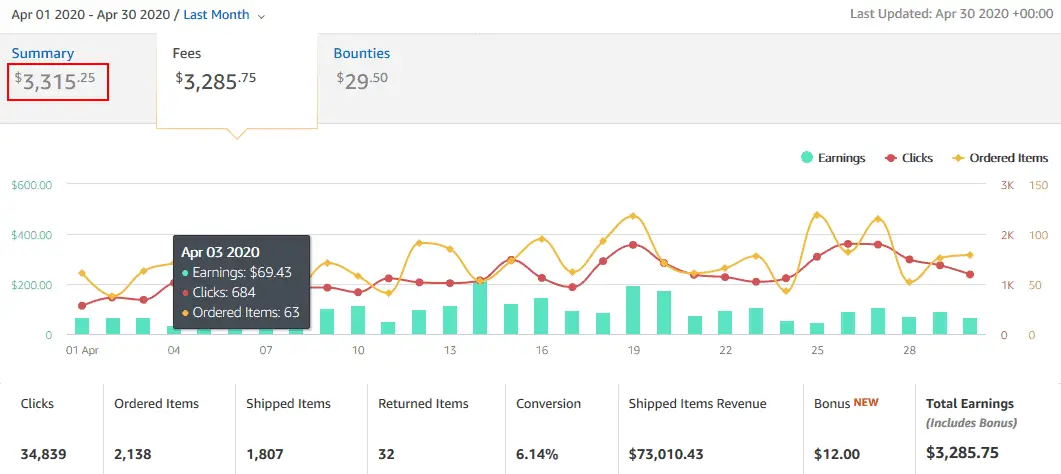
Amazon Earnings In 2021

Check this detailed Project 24 Course by Income School review for more details.
Considering that I’m blogging part-time, I strive to learn new things each day to impart my dedicated readers with optimal value.
Today I’ll share with you the fundamentals of not only starting but also monetizing a blog. But first, let’s first understand what a blog is.
In simple terms, a blog is a regularly-updated website with published niche-specific content (what we call posts).
I can also say that a blog is more like a public digital journal that you use to talk about your passion, interests, and exploits.
So, how do you start a Blog?
Let’s jump to the critical steps on how to start a blog for beginners and monetize it.
How to Start a Blog Step by Step for Beginners.
Step 1 – Niche Research: Decide about Your Niche
A niche is an area of interest that you can write about. You need to identify it and make sure it’s lucrative. It generally has to be something that readers can find exciting.
Knowing that picking a niche is mentally draining; consider using these ideas:
- General Categories – We all know that people like reading about finances, health and fitness, food, and relationships.
All those are examples of lucrative general niches that you can explore as a blogger.
- Your Passion – I’ve realized that it is almost effortless to run a blog if you can write about something you are passionate about.
It could be traveling, camping, sports, or even fishing.
- Untapped Markets – Markets such as pet care, learning new languages, and fandom are untapped, which means you can explore and make good cash.
How can you find niche ideas?
Here are two places that never fail me when I want to find a niche idea:
- Amazon – You can find niche ideas on Amazon by identifying highly-demanded products.
While at it, ensure that your product of choice is not a seasonal one to make your blog posts evergreen. I also recommend using an Amazon-specific research tool like SellerMotor.
- Flippa – I have sold and bought websites on Flippa, and I think it’s a beautiful place to find niche ideas for your blog.
You just need to focus on the content shared in most of the websites that are up for sale.
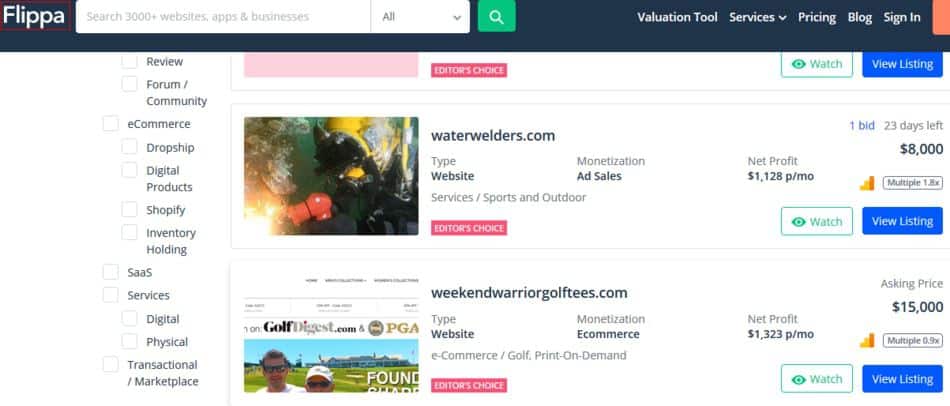
- Motion Invest – I have bought this very website on Motion Invest, and the process was smooth and efficient, with their own technical team migrating the website from seller’s hosting to my own hosting service.
Step 2 – Keyword Research
Getting traffic phase is vital when it comes to ‘how to start a blog for beginners step by step’ process.
To ensure that you drive enough traffic, you’ve to do proper keyword research.
Before anything, you’ve to ask yourself, what are people searching online about my niche? That’s a high starting point for coming up with keywords.
While at it, do the following:
1. Target about 50 keywords
The whole idea of coming with 50 or more keywords is to validate your niche idea. It makes it easy to come up with blog posts that focus on your original niche idea.
So, any time you need to come up with a topic for your blog post, just look at your keyword list.
2. Use Keyword Suggesting Tools
I mainly consider these tools to be necessary when coming up with keywords:
- Google auto-suggest – Provides you with keywords just by typing a question on its search box. You can use it to find keywords quickly.
- Ahrefs – The Ahrefs keyword explorer allows you to not only find the most relevant keywords, but it also gets detailed information about your blog. That is; concerning keyword search volume and the number of backlinks you need to appear on the first page.
- SEMrush – SEMrush shows you the keywords that your competitors are using. So, it makes it easy for you to match or beat them in content production.
- Ubersuggest – Ubbersuggest allows you to generate a list of keywords for free. It can help you find 100 plus long-tail keywords in minutes.
3. Apply KGR (Keyword Golden Ratio) for Competition Analysis
Keyword Golden Ratio is an intelligent data-driven tactic that you can use to find long-tail keywords. It is a useful tool when starting a blog to make money.
I like using it for my blog posts because it helps me to leapfrog my competitors by finding more effective long-tail keywords; the low hanging fruits.
Click here to learn more about KGR after having learned what are keywords for SEO.
Step 3 – Set Up Your Blog
It is generally an involving process when it comes to setting up your blog. You’ve to come up with a unique web address that readers can search and find (what we call a domain name).
You also need a company to host your site (a hosting service) as well as a blogging platform or a content management system (CMS). Here’s the breakdown:
1. Domain
You must have noticed websites taking this format – www. websitename.com. Well, that is what we call a domain. However, you are not limited to .com You can also choose other extensions such as .org or .net.
You must come up with a short and brandable domain name. One effective tool that can help you with that is Namemesh.com. It is a free tool that you can use to brainstorm on the most suitable domain names.
When brainstorming on the domain name, put your niche into consideration. Ensure that anyone who sees your domain name will know what your blog is about.
If, for example, your site is about parenting, you can try like momsbusydiary.com, workingmom.com, or parentingtipsfast.com. Well, those are just ideas. So, there is a chance that the domain names are already taken.
To avoid spammy domains and to check if your domain name has been used before, visit web.archive.org. This is very important because your domain might have been registered, used, spammed and then dropped.
Archive.org helps you identify traces of history for that domain. If there is no history, then, you can be sure the domain is virgin and good for use.
2. Hosting
This is what puts your blog online. Your host takes care of your important files and ensures the world sees your blog. It’s an essential consideration when starting a blog for money.
For a beginner blog, consider using Bluehost as they have an affordable hosting package. You only pay $3.95/month and get to receive a free domain.
Bluehost also enjoys amazing customer support, which is important for every blogger. Sign up here to take advantage of this discounted price
In case your site starts to receive heavy traffic, and you want fast loading time, then you can opt for A2 Hosting
A2Hosting also enjoys excellent customer support and is affordable (starts are $3.95 a month) though not as much as Bluehost.
The good thing about both hosting services is that they automatically install WordPress.
3. Install WordPress
You need a content management system (CMS) for your blog, and I cannot think of any other besides WordPress.org.
For one, WordPress.org is user-friendly. It allows me to access a lot of themes and plugins for free that I can use effortlessly.
It also allows me to create a blog for free. The only thing I pay for is the domain and the hosting.
4. Themes
How would you want your blog to look like? It is generally essential that you pick the right themes, and one great option is Acabado Theme. I use it for most of my blogs.
Acabado is easy to set up and has an insanely fast loading time.
Assuming you went with WordPress.org as your CMS and blogging platform, you would have access to so many free themes. But these themes are just basic and lacks good user interface.
Remember, we’re starting a business and it’s important to give your blog the best looks. Consider exploring other sources (paid or premium themes).
Unlike free themes, premium themes like Acabado enjoy more features, customization, and updates. The support is exclusive, and more importantly, the designs are great.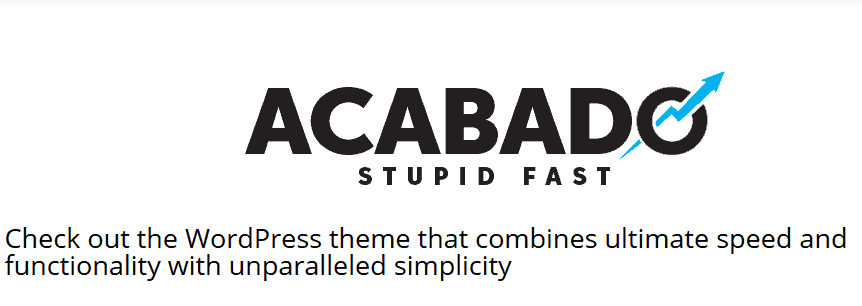
5. Plugins
Again, you don’t have to stress over this if you chose WordPress.org as your blogging platform. All you need to do is identify the best. WordPress has 54,000 plugins, and all have different features.
For blogging, however, I recommend Yoast. It is an important plugin for optimizing your content for the search engines.
As a result, it is vital to rank your site higher on Google and to grow its traffic. Yoast is available in a free and a paid tier (where you get more features).
You can also consider Monster Insights. It also has a free and premium version and provides you with comprehensive traffic analysis to help you measure your blog’s performance. Monster Insights implements Google Analytics easier.
Furthermore, if you are looking to speed up WordPress installations, you can also consider a plugin like WP Rocket.
Step 4 – Content Creation
Content creation is the backbone of blogging. It is essential when learning how to start a blog and make money.
Most bloggers who end up complaining about not getting enough traffic on their site go wrong here. They do not create content that adds value to the reader and that which is pivoted by keyword research.
The other mistake they do is blogging about non-trending topics. I always check my topics on Google Trends to see if they are among the most trending.
Generally, I suggest the following when coming up with your blog posts:
1. High-Quality Content
You need to create content that can solve your readers problem. Provided that readers can get a thing or two from your blog post, they would want to read more.
2. 1500+ Words
The idea of writing a long post is to give the reader detailed information. More importantly, Google tends to rank longer posts higher. You only need to ensure you break your long posts into subheadings to improve readability.
3. Informational Content or Reviews
Readers want to find solutions to their problems. If they are buyers, for example, they want to know which products are the best and why.
And if they are just general readers, they want to get new tips to help them address what they are going through. As a result, it is smart to focus on informational content or reviews.
Step 5 – Content Promotion
It is every blogger’s dream to see readers flock to their site as soon as they launch.
Unfortunately, things don’t go like that unless you promote your content. It makes it easy for readers to notice it.
If you are looking to master how to start a blog to make money, here are content promotion approaches you need to explore:
a) Social Media
Social media is a broad platform that you can leverage to promote your content. But if you are looking to do it exhaustedly, consider using one or two of the platforms first. My pick would be Facebook and Pinterest:
You have friends on Facebook, don’t you? They are a great starting point for promoting your content. Sharing with them a link to your blog post allows them to be the first source of traffic.
The other thing you can do to promote your content on Facebook is to join a few blogging groups.
I, for one, am a member of several freelancing groups on Facebook. They allow me to promote my content to a wider audience and improve on-site traffic.
Furthermore, you can ask questions and then direct people to your blog to find answers. I use the strategy sometimes to promote new posts, and it seems to work for me.
I consider Pinterest to be the most effective social media when it comes to promoting my content. The secret is to come up with catchy titles and pins.
Wondering how you can get the most out of Pinterest? Try the following
- Create a business account – Use this link to sign up for a Pinterest business account.
- Add relevant boards – For a start, consider having about 20 boards. They should be relevant to your blogging niche.
- Join relevant group boards – If you have a low reach, group boards are handy. You can find them by searching directly on Pinterest. Alternatively, you can use Pingroupie. It makes the search effortless.
- Set up several rich pins – Rich pins are useful pins that provide you with additional information. They have a follow button that makes it easy for people to follow you (your blog). I consider this critical in promoting my content fast.
b) YouTube
I use YouTube for different things, and one fantastic way that the platform comes handy for me is blog promotion.
Through my YouTube Channel, I not only give tips on finances, entrepreneurship and savings, but I also direct traffic to my blogs.
YouTube generally helps me catch the attention of the audience to enable them to have a liking for my site.
If you want to start a YouTube Channel, here is a great course that can guide you through this process and shorten your path to success. This course is offered by Income school and details 60 steps to a successful YouTube channel.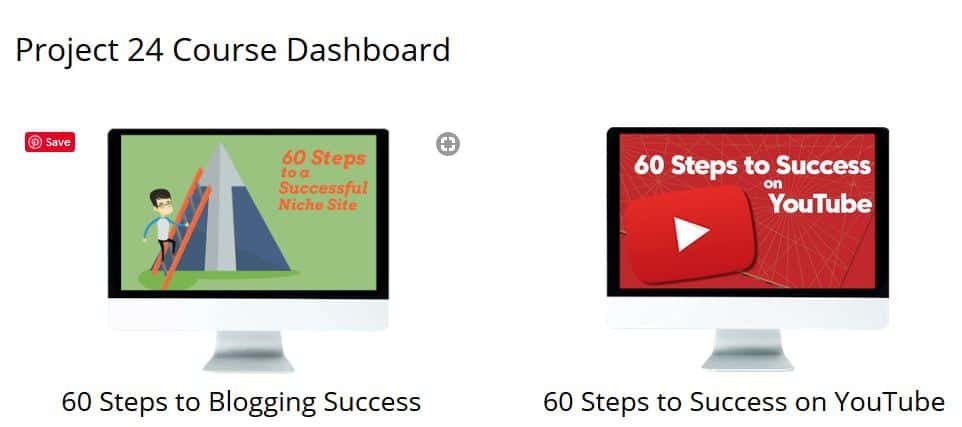
Also, remember to include a link to your website below your videos.
c) Guest Posting
As a blogger, it is not always about you. Sometimes you just have to promote other blogs. I am talking about guest posting where you publish your articles on someone else’s site.
It’s, however, essential to also get value from the websites that you write for. It is generally a mutual relationship.
For a start, you need to reach out to the right bloggers. I consider these sites legit for guest posting:
Step 6 – SEO for Your Website: Help the Website to Rank in the Search Engine
I remember saying that content creation is the backbone of blogging. I should add at this point that your target readers cannot find your content online if you don’t invest in search engine optimization (SEO).
So, what is SEO?
SEO is the process of improving the visibility and traffic of your blog. Search engines consider SEO in directing traffic to specific sites.
While it may seem daunting for a beginner to do SEO, it is essential. You need to prioritize both on-page and off-page SEO if you want to master how to start a blog and make money:
a) On-Page SEO
On-page SEO refers to the optimization tweaks you perform on your blog. It relates to everything you do to a website to make it fully optimized for SEO.
Generally, on-page SEO involves the following aspects:
-
Optimize Content
Content optimization refers to the process of making your blog more Google-friendly and user-friendly.
It is the conversion of keyword research (what we saw on step 2) into text that can make your blog rank higher.
You must use keywords correctly in your content to make your posts easily searchable online. If you install Yoast plugin, it’ll remind you to use keywords in all relevant places, and that includes the content. Yoast rates your content not just based on readability but also SEO.
-
Create SEO-friendly URLs
You also need your URL to be SEO-friendly, and this brings us to what we call a permalink. Permalink is the text that follows a .com or .org extension. It is a static link that directs your site visitors to specific blog posts or web pages.
Here are critical tips for optimizing URLs for SEO:
- Add target keywords to your URL
- Don’t put capital letters in your URL – They confuse the search engine and site visitors. Just use lower case.
- Avoid including dates in your URL
- Make sure your URLs are readable.
-
Write Title and Meta-descriptions
Let’s start by understanding what a title tag is. Well, a title tag is an individual HTML that specifies the blog title. It is usually displayed on the SERPs (search engine results pages) as clickable headlines.
The title tag gives you an accurate and precise description of your blog post. To ensure your title tags are optimized for SEO, do the following:
- Do not use more than 60 characters
- Use a unique title for every page
- include your target keyword
- Do not stuff keyword
Meta-description, on the other hand, refers to a summary of your pages. You can optimize your meta-description for SEO using these tips:
- Come with about 150 characters
- Write in an active voice
- Include a CTA (call to action)
- Include the main keyword and other related keyword in your description
-
Image Optimization
You cannot have just text information on your blog. It can be annoying to the readers if you do and may even scare others from trying to read your posts. So, images are a vital inclusion.
But still, you have to focus on SEO when inserting your images. They have to be optimized for searchability, and here are the things to remember:
- Use JPEG and PNG format – They are of better quality than other forms.
- Compress the images – Search engines may see them as blurry if they are not dense, and so your blog may not appear on search results. You can use Photoshop to compress them.
- Optimize alt text – Alt text is what describes your images. It is more like a title tag. So, use your primary keyword there. If you have more than one image, use related keywords for the Alt text in other images.
- Optimize for mobile – Also, ensure mobile devices can view your images. You have to make them responsive and scalable for mobile navigation. Other than compressing them, another way to optimize images for mobile is to reduce their screen resolution.
- Add to sitemaps – Adding images to sitemaps makes it easy for search engines to find and index them.
-
Optimize for CTR
CTR (click-through-rate) refers to the ratio of site visitors who click on a particular URL to those who see it. It is a crucial evaluator of SEO. CTR is expressed as a percentage, and the higher the percentage, the higher the traffic and conversion.
Here are things to do to optimize for CTR:
- Use countdown timers to create a sense of urgency
- Add a primary keyword to the ad’s URL
- Include a call to action
b) Off-Page SEO
Off-page SEO refers to building links and reaching out to possible influencers as a way to promote your website.
Unlike on-page SEO, off-page SEO can be challenging for beginners. Lucky for you, here are the basics to get started on how to start a blog that earns money through off-page SEO.
-
Blog Comments
You can find other niche related blogs and leave rich comments on their posts. This gives you an opportunity to leave your blog link while commenting. Although these are no-follow links, google recognizes them and counts it as a vote to your site.
Additionally, readers can use this link to visit your blog which is a win for you!
-
Organic Link Building
One effective way to obtain backlinks to your blog is to build organic links. So, what exactly is an organic link?
An organic link is simply a link originating from someone else’s blog/website or social media account.
It happens when they link to your blog without you asking them to do so. All you have to do to convince them that your blog is worth linking is to create great content.
Organic link building not only drives traffic to your site but also makes you credible in a particular niche.
-
Guest Posting
I had mentioned earlier guest posting as a way to promote your blog post. I also have to say that it is also a practical link building approach, especially for blogging for beginners.
By publishing your articles on people’s blogs and websites, you achieve the following:
- Build relationships with other bloggers, which means an opportunity to grow your influence online
- Leave links (backlinks) on the host blog to redirect traffic to your blog
- The backlinks on the host blog improve the value of your site, and this enhances your ranking on Google.
-
Broken Link Building
Broken link building is when you find broken (dead) links; recreate them, and then asking those linking to them to replace them with your recreations. I am talking about pages that display the 404 error message.
Since no one wants broken links on their websites, they’ll agree to your idea. In the long run, this helps you to direct traffic to your blog.
Wondering how to find such links? I recommend that you use Ahrefs and SEMrush.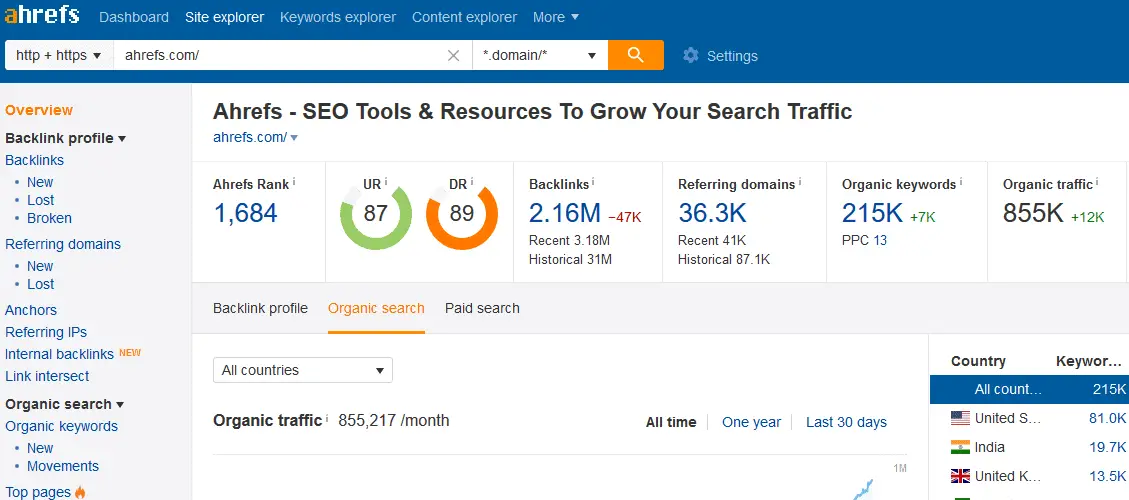
-
Infographics
Infographics continue to outdo most visual content day by day, and they have become a critical consideration in SEO.
You can build links and improve your ranking with infographics in the following ways:
- Publish them on your blog to allow others to link back
- Promote via press releases
- Share on social media and influencer forums
- Share on Infographics directories
-
Influencer Marketing
Another strategy that I use to build connections is finding fellow bloggers online that I can interact with.
I look for influencers in my niche on social media, especially on Twitter. The idea is to try and get level with them.
Once you grab their attention, then you can introduce your blog to them and ask if they can share a few of your blog posts with their audience.
To get influencers online, you can use a tool like BuzzSumo. I’ve used it several times, and it seems to be directing me to the right influencers.
Step 7 – Get Traffic and Start Making Money: Monetize Your Blog
Now that you have gone through the blog creation and promotional phase, it is time to make money. Most readers rush to this step as it’s the reason why most of us run blogs.
I had mentioned that my blog makes me over $3,000. Well, that is because I combine several things. Notably are:
-
Ads
Ads are an effective money-maker if you get page views more regularly. Since most readers find them annoying, you have to use them discriminately. My favorite ads are AdSense ads, Ezoic ads, and soon will be trying Mediavine ads
-
Affiliate Marketing
Affiliate marketing refers to the act of recommending products or services to your audience using unique links (affiliate links). You earn when the page visitors make purchases or subscriptions.
You may not know this, but most of the product that you see online belongs to a specific affiliate program that earns the site owner a commission. You’ll realize, for example, that I have put a few links to different products on my blog.
So, if you choose to click on the link and end up buying the product, I’ll receive a commission from these companies at no extra cost to you.
If you are looking for productive affiliate links to use on your blog. I recommend ShareASale. They have hundreds of affiliate links that you can use to monetize your blog.
-
Selling Products
Running a blog allows you to sell just about anything provided it is relevant to what you are blogging about. You can sell digital creations like eBooks or physical products.
-
Online Courses
You can offer online courses at a fee. Most bloggers do it, and it seems to be a significant income generator.
In future, I’ll start to offer online courses for a price on my blog to leverage on this source of income.
-
Paid Subscriptions (Memberships)
You can also earn money on your blog through paid subscriptions. It mostly happens when you are offering training through video tutorials or online courses.
-
Services
This is an area where I also tend to make money. I do freelance gigs on my blog. I have received several requests to write for companies and individuals, and they agree to pay me.
I also offer consulting services in the finance niche and make money online niche. So, the options are not limited here. You can sell just about any service you want.
How to Create a Blog for Free and Make Money.
Are you wondering how to start a blog for free and make money? The obvious answer will be to try these sites:
In the above cases, you neither pay for the domain nor the hosting. Sadly, though, you cannot monetize your blog as you don’t own it.
My advice is that you should try them if you are blogging for fun. But if you are looking to make money as a blogger, then you should go for paid subscription options.
Here are a few reasons why I think free blogging sites are a bad idea:
- Your blog features disrupting ads that you have no control over
- The company can take down your website anytime if you violate any term
- They have countless restrictions on storage, features, design, and customization
Do you now understand where I’m coming from?
Conclusion
The reality is that most people don’t get much money from blogging because they either gave up prematurely or don’t have enough information about the industry before joining.
Hopefully, you’ll find this post useful. The steps on how to start a blog and make money are simplified for your easy following.
In order to start your own blog, you need to determine the niche of your blog that will be of interest to you and your audience and research keywords to attract traffic.
It is recommended to promote your blog through social media, email marketing, guest posting, and participation in online communities. It also suggests building relationships with other bloggers in your niche.


